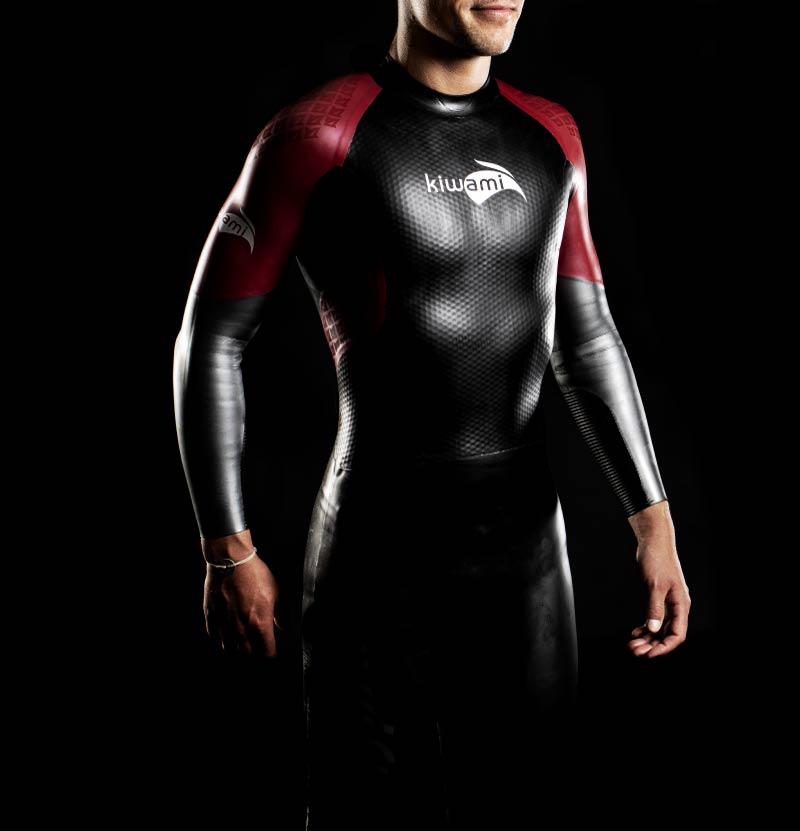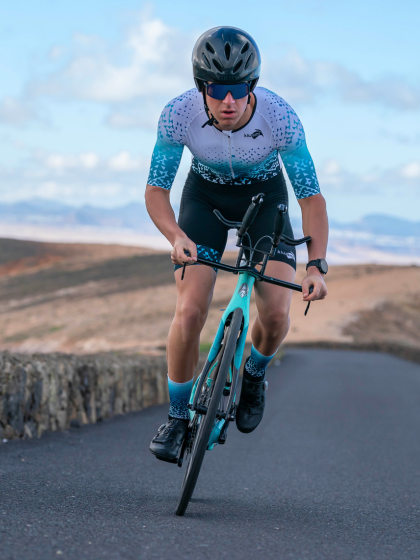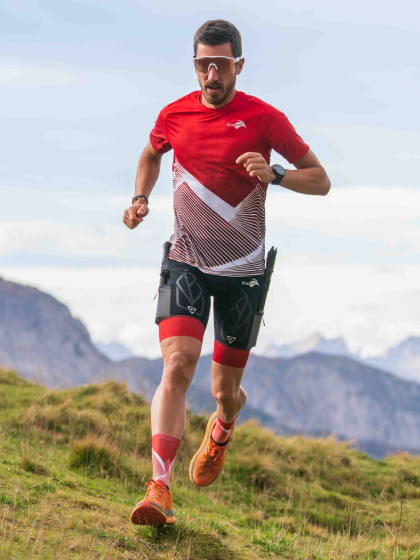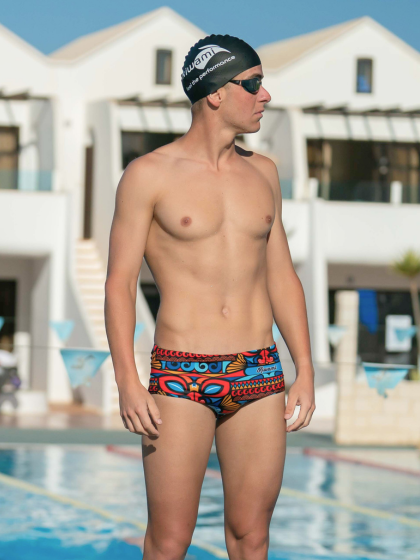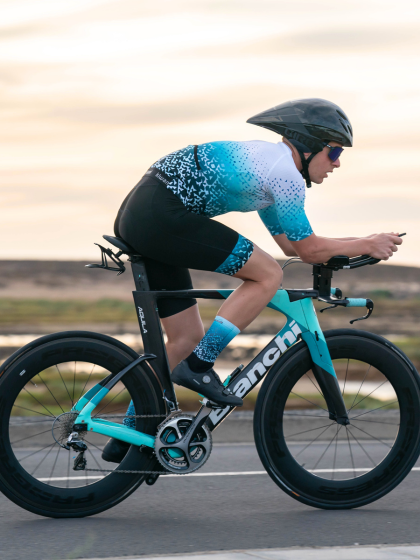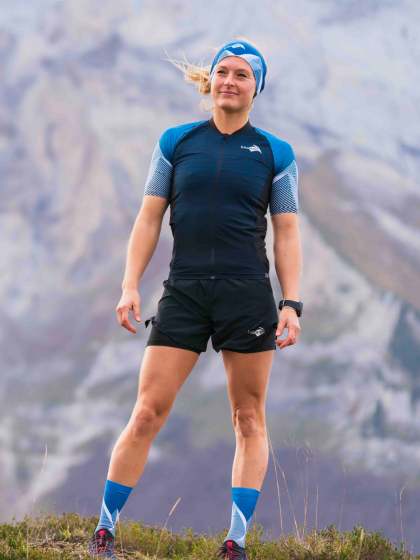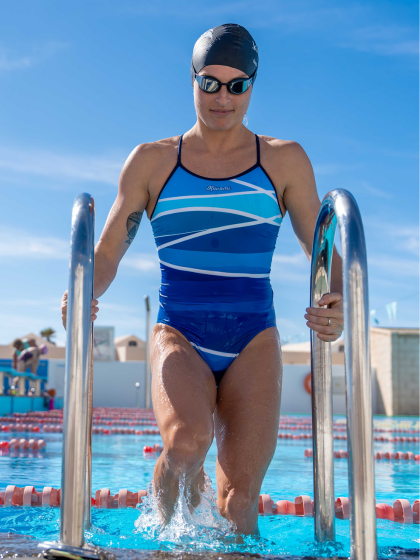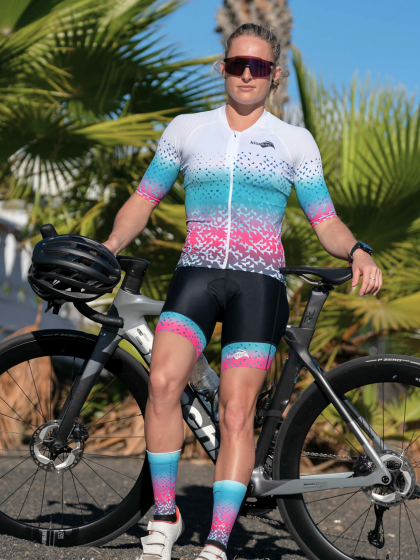We spent nearly 3 years in research and testing to create the ultimate, speed-enhancing wetsuit.
With no less than 6 different buoyancy levels, a customizable leg length and a unique limestone-based neoprene, the KIWAMI SWIFT wetsuit has outperformed any other wetsuits in our comprehensive tests.
From the first strokes in the water, you’ll feel how the KIWAMI SWIFT promotes a perfect body position, a high elbow catch and pull, a body roll that activates the larger back muscles. The KIWAMI SWIFT wetsuit will inevitably help you with FASTER times in the water, whether you are an elite swimmer or not.
Key Features:
- KIWAMI SWIFT wetsuit is made of a limestone-based neoprene. It packs over 30% more air than traditional neoprenes. This translates into a more buoyant, lighter, suppler and more durable wetsuit. 6 different neoprene thicknesses to optimize body position, arm catch and body roll.
- Airdome ® technology on front and hip areas guarantees optimal buoyancy and promotes hip roll.
- Customizable leg length lets you adjust the legs to your body. By eliminating the bunch up at the ankle level, drag is reduced and transition times are shortened. Ankles remain floppy and not flexed nor stiff.
- Inside forearms catch panels create turbulence under the forearms leading the elbow up while pulling your arm back. It helps bring the forearm into a vertical position as quickly as possible during the under water phase of the arm stroke.
- Hydrodynamic and extra flexible side panels facilitate maximum stroke extension.
TESTING KIWAMI SWIFT'S SPEED VS. THE COMPETITION AND VS. A STANDARD SWIMWEAR Times are for 100m repeats.
Tests were performed in 25 m pool.
4 different levels of swimmers participated in the tests.

BUOYANCY AND STABILITY : 6 DIFFERENT LEVELS!
KIWAMI’S AIRDOME ® TECHNOLOGY: PRESS YOUR BUOY; INCREASE YOUR SPEED!The chest and hip areas of the SWIFT wetsuit are composed of a 4 mm Airdome ® neoprene which traps air bubbles, increasing buoyancy and flexibility. Our tests convinced us that 4 mm is the ideal thickness for these panels. Extending the chest panel to cover the hips facilitates body roll and help activate larger back muscles in addition to the shoulders.
A 3mm neoprene is used over the lower back and front lower legs, aiding buoyancy, lower back support and promoting a two-beat kick.

POSITIVE TURBULENCE FOREARM SYSTEM
KIWAMI SWIFT has integrated ribbed catch panels on the inside forearms. The ribs, perpendicularly aligned to the arm’s catch, create turbulence under the forearm which forces the forearm down and the elbow upwards. The forearm is quickly put into a vertical and powerful catch position which is imperative for an effective under water phase of the swimming stroke.
ADJUSTABLE LOWER LEG LENGTH
As in Kiwami’s latest Spider2 trisuits and shorts, KIWAMI SWIFT has an adjustable leg length to allow a better fit for everyone. You can choose from 3 different lengths. Advantages include floppy ankles for a faster kick and also faster transition times as the suit doesn’t bunch up at your ankles.

DETAILS THAT MAKE A DIFFERENCE

LIMESTONE-BASED NEOPRENE
Limestone neoprene is an environmental friendly material. It also has a high micro-cell structure, catching over 30% more air inside the rubber. It also has a lower density. Advantages include a lighter, more impermeable, durable and stretchy wetsuit.

AQUA GLUE
KIWAMI SWIFT uses a 100% free of hard chemicals glue. It is aqua based and completely solvent free.

LOW COLLAR CUT
KIWAMI SWIFT’s collar is cut below the laryngeal prominence to ease your breathing while swimming. The collar is made of a laser-cut 2 mm neoprene panel which is not doubled over. That increases comfort and still prevent water penetration.

RE-INFORCED SEAMS
You’ll notice while inspecting the inside of KIWAMI SWIFT, that particular attention has been brought to all seams. They are glued, sewn and reinforced to maximize the durability of the wetsuit.

REVERSE VELCOR NECK CLOSURE
Unlike most wetsuits, KWIAMI SWIFT’s closing soft Velcro in on the closing flap to prevent neck chaffing.

REVERSE ZIP CLOSURE
The reverse zip closure with maximum strength YKK ® zipper means the wetsuit is closed by pulling the zip downwards. This prevent the suit from being opened while swimming.

COLORED SHOULDERS
As with KIWAMI AQUARUSH Swimskin, the SWIFT wetsuit presents bright colored shoulder panels, increasing the swimmer visibility for spectators and supporters.
1. This sizing should serve as a guide. Many athletes will fall in between categories and we can assist: we have a strong experience in sizing of our gear. Do not hesitate to contact us either via email or phone.
2. Before putting on your KIWAMI SWIFT: we strongly suggest using the Kiwami gloves that are provided with your Kiwami SWIFT. They will protect the wetsuit against your nails; nails indeed are the worst “enemy” of your wetsuit.
3. The wetsuit should be put on with legs first, slowly working your way up. Before sliding into your arms and top, make sure the bottom part of the SWIFT is well positioned.
We suggest the legs to be pulled just under your calves and the arms to be above your wristwatch.
You will get a faster transition and a better feel for the water.
+ WHY WEAR A WETSUIT FOR A TRIATHLON RACE ?
Depending on the water temperature, a neorene suit or other thermal protection may or may not be mandatory equipment for a triathlon race. Event organizers measure the water temperature before race start and inform the participants which of 3 possible scenarios apply :
- Water temperature is below 16°C : a neoprene wetsuit is mandatory to ensure the saftey of all competitors (it's too cold without a wetsuit, athletes risk hypothermia) ;
- Water temperature is between 16 and 24.5°C : Triathletes can choose if they wear a wetsuit of not ;
- Water temperature is above 24.5°C : Neoprene wetsuits are forbidden to ensure the safety of all participants (it's too hot with a wetsuit, athletes risk dehydration).
Other than the safety factors, a specifically designed triathlon wetsuit will optimize the swimming body position and increase bouyancy. Internal test with the SWIFT triathlon wetsuit show a speed gain per 100m of between 8 to 16sec depending on the athlete !!
+ WHAT TO DO IF THE WATER IS TOO WARM FOR A NEOPRENE WETSUIT ?
If the use of wetsuits is forbidden because the water temperature is too high, you are allowed to wear a "Swimskin" - a suit made from fabric covers your triathlon suit.
You can use the Swimskin for the swim section of the triathlon only, removing it before the bike section. Kiwami is a specialist designer and manufacturer of Swimskin's, with our AQUARUSH leading the way.
The Aquarush's hyper-water repellent yet breathable fabric and specific design help you float better and reduce your drag in the water, boosting performance while also providing moderate thermal protection.
Internal tests show the Aquarush to provide gains of between 4 and 8sec per 100m compared to swimming with a regular swimsuit. Not as fast as a neoprene wetsuit such as the SWIFT, but still not bad either !
The Aquarush can also be used for triathlon, open water swimming training and racing in warm weather and for Swim-Run events.
+ CARE INSTRUCTIONS
Here’s our tips and tricks to extend the life of your wetsuit :
Wetsuits, can be pretty fragile, so try to avoid rocks, reef and the gravel in the carpark.
Keep your hands and fingers as flat as possible when pulling the suit up.
For the best fit, pull up the sleeves and legs as much as possible. To keep water out of your wetsuit, you want to have the feeling that the wetsuit is too short on you. Neoprene must be tight around your wrists and ankles.
Rinse your wetsuit in cold water. Turn it inside out and have another go.
Hang up your freshly rinsed wetsuit inside out to dry in the shade, using a hanger with very wide shoulders or let it dry flat. Direct sunlight is not neoprene’s friend. Wetsuits can be pretty heavy when they’re full of water so hanging them by the neck and shoulders will stretch it out.
After it’s been drying for a while, turn it inside out and give the other side a chance to dry too. This step is just as important as rinsing.
Try not to swim in chlorinated water as chlorine may affect the quality of the neopren.
In the same way, try not to pour sunblock or mineral oils over your wetsuit : prefere organic products such as macadamia, jojoba, or almond oil.
Hopefully these instructions on how to take care of a wetsuit will get you more mileage out of your suit.
